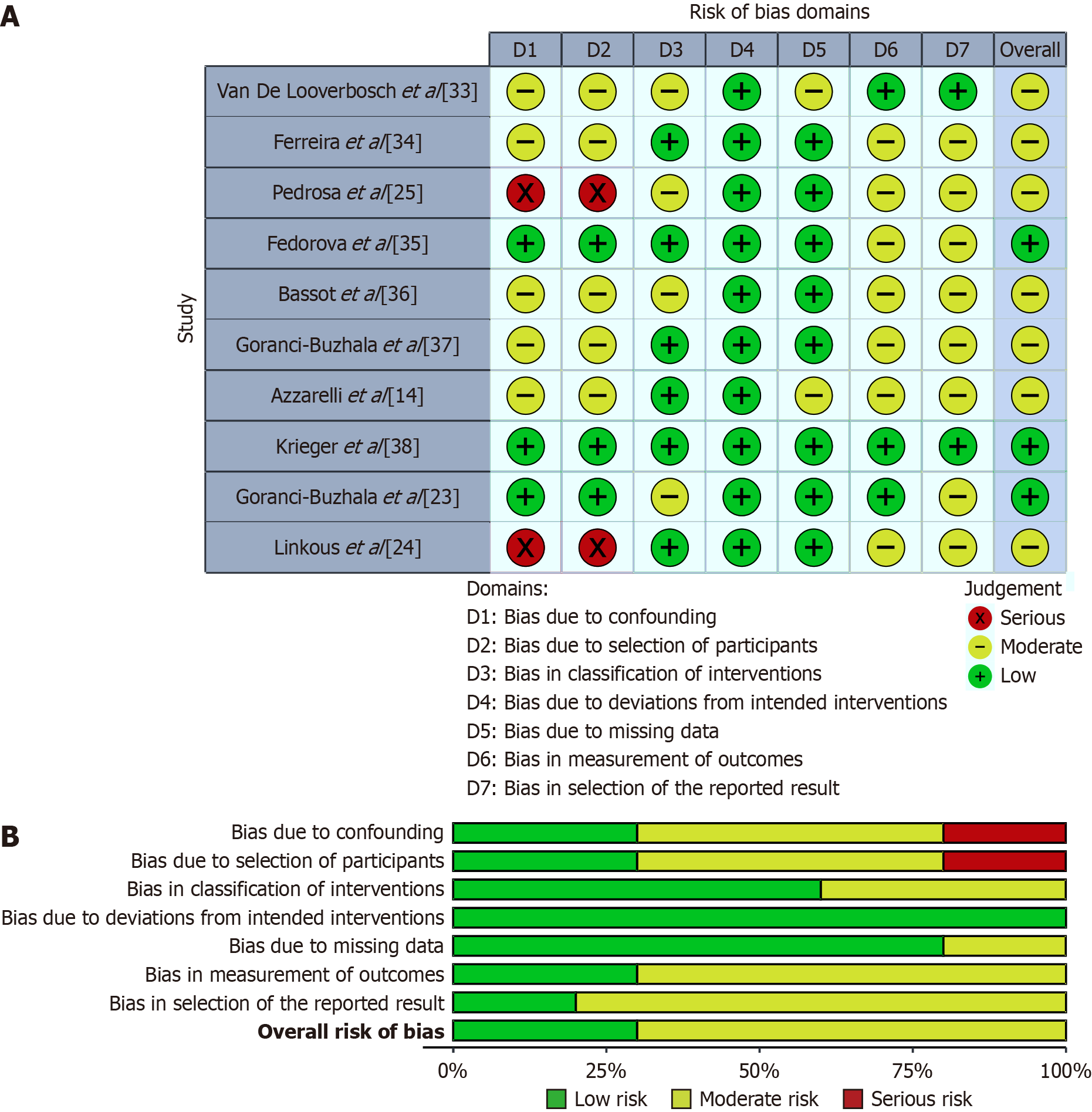Copyright
©The Author(s) 2025.
World J Stem Cells. Aug 26, 2025; 17(8): 108898
Published online Aug 26, 2025. doi: 10.4252/wjsc.v17.i8.108898
Published online Aug 26, 2025. doi: 10.4252/wjsc.v17.i8.108898
Figure 2 Risk of bias assessment of the included studies using the Risk of Bias in Non-Randomized Studies of Intervention-I.
A: Visual representation of the domain-level risk of bias judgments (D1 to D7) for each study. Each cell indicates the assigned risk level based on consensus among reviewers: Green (+) for low risk, yellow (–) for moderate risk, and red (×) for serious risk. The “Overall” column reflects the overall risk of bias rating across all seven domains; B: Summary plot showing the proportion of studies rated as “Low”, “Moderate”, or “Serious” risk of bias within each domain. Higher proportions of moderate or serious risk were observed in domains related to confounding (D1) and selection of participants (D2), while other domains predominantly showed low risk of bias.
- Citation: Alves ADH, Ennes do Valle NM, Yokota-Moreno BY, Galanciak MCDS, Felix da Silva K, Mamani JB, Sertie AL, de Oliveira FA, Nucci MP, Gamarra LF. Stem cell-derived neural organoids as platforms to investigate glioblastoma invasion and migration: A systematic review. World J Stem Cells 2025; 17(8): 108898
- URL: https://www.wjgnet.com/1948-0210/full/v17/i8/108898.htm
- DOI: https://dx.doi.org/10.4252/wjsc.v17.i8.108898









